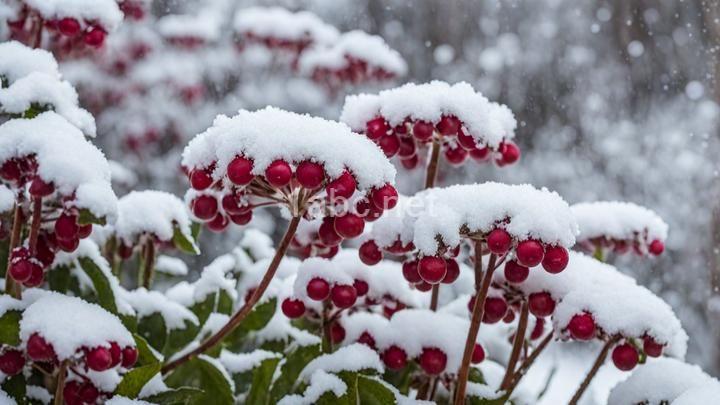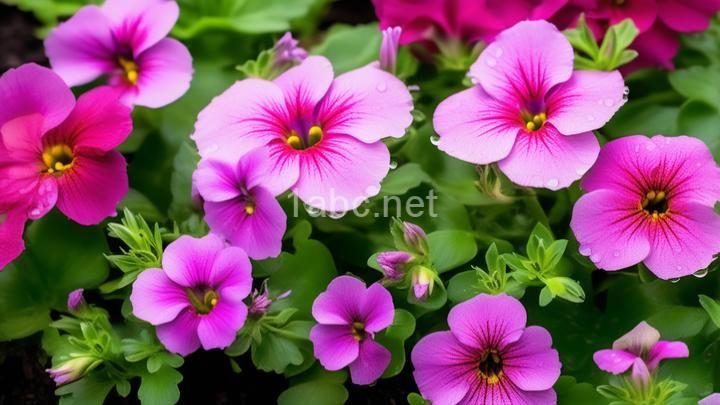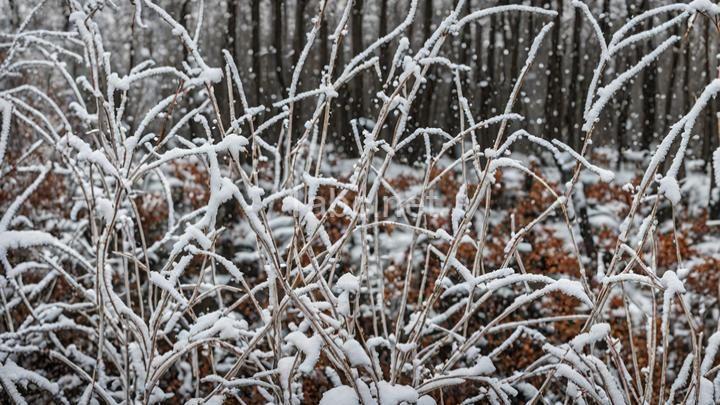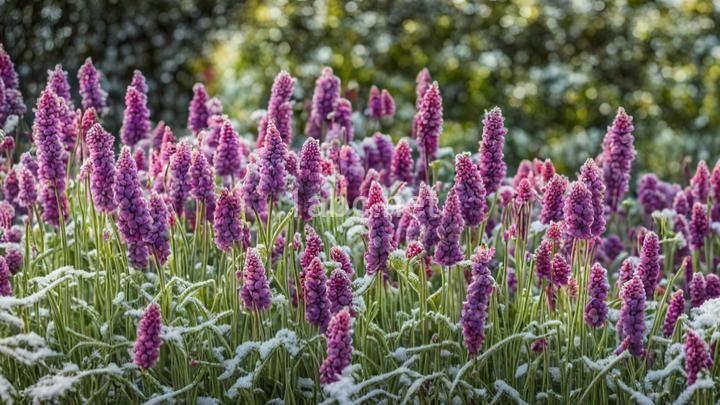The Importance of Winter Protection for Garden Perennials: What You Need to Know

Introduction:
Welcome to our blog post on the importance of winter protection for garden perennials! As the cold weather approaches, it's crucial to ensure that our beloved plants are well-prepared to withstand the harsh conditions of winter. In this post, we'll explore why winter protection is essential, provide practical tips and advice, and discuss common mistakes to avoid. So, grab a cup of hot cocoa and join us as we delve into the world of winter gardening!
Section 1: Understanding Garden Perennials
Before we dive into the nitty-gritty of winter protection, it's important to understand what garden perennials are and why they are a favorite among gardeners. Garden perennials are plants that live for more than two years, often returning year after year. Unlike annuals, which complete their life cycle in one season, perennials have a longer lifespan and offer the joy of enduring beauty.
These plants come in a variety of shapes, sizes, colors, and textures, making them versatile choices for any garden. From vibrant flowers like roses, tulips, and daisies to foliage-rich plants like hostas and ferns, the options are endless. Garden perennials not only add visual interest but also contribute to the overall health and balance of your garden ecosystem.
Section 2: Why Winter Protection Matters
Winter poses several challenges for garden perennials, and without proper protection, they can suffer severe damage or even perish. The extreme cold temperatures, frost, and heavy snowfall can wreak havoc on plants, especially those that are not adapted to withstand the harsh conditions. By taking the time to provide winter protection, you are ensuring the survival and success of your garden perennials for the coming seasons.
Extreme cold temperatures can freeze the roots of plants, causing them to die off or become weakened. Frost can damage the delicate tissues and cells of plant leaves, leading to discoloration, wilting, and even death. Additionally, heavy snow accumulation can break branches and weigh down plants, causing structural damage.
Section 3: Tips for Winter Protection
Now that we understand why winter protection is crucial, let's dive into some practical tips to prepare our garden perennials for the cold months ahead.
Mulching is one of the most effective ways to protect plant roots from freezing temperatures. Apply a thick layer of mulch around the base of your perennials, ensuring that the roots are covered. This insulates the soil, preventing it from freezing and providing a buffer against extreme temperature fluctuations.
For vulnerable plants or those with delicate foliage, wrapping them can provide an extra layer of protection. Use burlap or frost cloth to cover the plant, creating a shield against harsh winds and freezing temperatures. Be sure to secure the wrapping gently, allowing for some airflow to prevent moisture buildup.
If you have tender perennials that need extra protection, consider using structures like cold frames or cloches. These structures provide a mini-greenhouse effect, trapping heat and creating a microclimate for the plants. Make sure to ventilate them during warmer days to prevent overheating.
Section 4: Tools and Materials Needed for Winter Protection
To effectively protect your garden perennials during winter, you'll need a few essential tools and materials. These include garden gloves, pruning shears, mulch, burlap, frost cloth, and structures like cold frames or cloches.
Garden gloves will protect your hands from cold temperatures and potential injuries while working with plants. Pruning shears are handy for removing any dead or damaged foliage before applying protection.
Mulch acts as a natural insulator, so be sure to have a good supply on hand. Choose organic materials like straw, wood chips, or shredded leaves, as they not only provide insulation but also enrich the soil as they break down.
Burlap and frost cloth are excellent choices for wrapping plants, offering protection without completely blocking out sunlight or airflow. These materials are breathable and allow for essential gas exchange while shielding plants from harsh winter conditions.
Finally, consider investing in structures like cold frames or cloches to create a controlled environment for your more delicate perennials. These structures can be bought or DIYed using materials like PVC pipes and plastic sheeting.
Section 5: Common Mistakes to Avoid
While winter protection is crucial, there are a few common mistakes that gardeners often make that can hinder its effectiveness. Let's discuss these mistakes and how to avoid them.
Over-mulching can suffocate plants and create a damp environment that promotes fungal diseases. Remember to apply a thick but breathable layer of mulch, leaving a small space around the stems to prevent moisture buildup.
Improper wrapping techniques can also cause more harm than good. When wrapping plants, ensure that the materials are securely fastened but not too tight, as this can damage the plant or restrict growth. Leave some space for airflow to prevent the buildup of excess moisture.
Using incorrect materials for winter protection can be detrimental to plants. Avoid using plastic alone, as it can create a greenhouse effect and trap excess heat, leading to damage or death. Opt for breathable materials like burlap or frost cloth to provide the necessary protection without causing harm.
Conclusion:
Winter protection plays a vital role in the survival and success of your garden perennials. By following the tips and advice provided in this blog post, you can ensure that your beloved plants are well-prepared to endure the cold months ahead. Remember, a little effort now can lead to thriving gardens in the spring!
We hope you found this post informative and helpful. If you have any questions or need further assistance, please don't hesitate to reach out to us. Happy gardening!
Closing:
Thank you for joining us on this journey through the world of winter protection for garden perennials. We hope you found the information valuable and inspiring. As the cold weather approaches, remember to take the time to prepare your plants for winter, and they will reward you with their beauty and resilience in the seasons to come. Happy gardening!
FREQUENTLY ASKED QUESTIONS
Why is winter protection important for garden perennials?
Winter protection is crucial for garden perennials for several reasons. First and foremost, winter weather can be harsh and unforgiving, causing damage to the delicate plants. Freezing temperatures, strong winds, and heavy snowfall can all take a toll on the health and longevity of perennials.By providing winter protection, you can help your garden perennials survive the cold season and thrive in the following year. This can be achieved through various methods such as mulching, covering with frost blankets, or using protective structures like cold frames or hoop houses.
Mulching plays a significant role in protecting perennials during winter. A layer of organic material, such as straw or wood chips, helps insulate the soil, keeping it at a more stable temperature. This insulation prevents the soil from freezing and thawing rapidly, which can be detrimental to the roots of the plants.
Covering perennials with frost blankets or using protective structures provides an extra layer of defense against the harsh winter elements. These coverings create a microclimate around the plants, shielding them from cold winds and reducing the risk of frost damage.
Winter protection also safeguards perennials from dehydration. Even though plants might not be actively growing during winter, they still lose moisture through their leaves and stems. By providing protection, you can help minimize water loss and maintain the plants' overall health.
Furthermore, winter protection can help prevent damage caused by pests and diseases. Some pests and diseases thrive in cold weather and can wreak havoc on vulnerable perennials. By implementing protective measures, you can reduce the risk of infestations and diseases, ensuring the plants' survival and well-being.
In conclusion, winter protection is essential for garden perennials as it safeguards them from freezing temperatures, harsh winds, snowfall, dehydration, pests, and diseases. By taking proactive steps to protect your perennials, you can help ensure their longevity and enjoy a thriving garden in the coming seasons.
What are some effective winter protection methods for garden perennials?
To effectively protect your garden perennials during the winter, here are some methods that you can consider:
-
Mulching: Applying a layer of mulch around the base of your perennials can help insulate the soil and protect the roots from extreme cold temperatures. Organic materials like straw, shredded leaves, or wood chips can be used as mulch.
-
Wrapping: For more delicate perennials, you may want to consider wrapping them with burlap or frost cloth. This will provide an extra layer of protection against freezing temperatures and harsh winds.
-
Watering: It's important to keep your perennials well-hydrated before the winter sets in. Adequate watering helps the plants withstand the dry conditions and prevents dehydration during the colder months.
-
Providing shelter: Creating windbreaks or placing your perennials near structures like fences or walls can offer additional protection from strong winter winds. This can help reduce the risk of damage caused by windburn or desiccation.
-
Pruning: Before winter arrives, it's a good idea to trim back any dead or damaged foliage on your perennials. This promotes healthy growth in the spring and removes potential sources of disease or pests.
-
Avoiding waterlogged soil: Ensure proper drainage around your perennials, as waterlogged soil can lead to root rot and other issues during the winter. Consider using raised beds or improving drainage in problem areas.
Remember, different perennials have different cold hardiness levels, so it's essential to choose plants that are suitable for your specific climate. Additionally, closely monitoring your garden throughout the winter and taking necessary precautions will help ensure the survival and health of your cherished perennials.
When should I start winter protection for my garden perennials?
You should start winter protection for your garden perennials when the weather starts to cool down and frost becomes a possibility. It's best to begin preparing your plants for winter before the first frost hits, as this will help them survive the cold temperatures and harsh conditions.One important factor to consider is the specific needs of each type of perennial in your garden. Some plants are more cold-hardy than others and may not require as much protection. Research the specific varieties you have and determine their hardiness zones to get a better understanding of their winter needs.
Generally, you can start winter protection by mulching around the base of your perennials to insulate the soil and protect the roots. This can be done once the ground has started to freeze, usually in late fall or early winter. Apply a layer of mulch, such as shredded leaves or straw, to a depth of about 2-3 inches.
In addition to mulching, you may also want to consider using protective coverings, such as burlap or frost blankets, to shield your plants from cold winds and heavy snow. These coverings can be placed over the plants once they have gone dormant and the leaves have died back.
Remember to remove any coverings or mulch in the spring when the weather starts to warm up. This will allow your perennials to emerge and grow again.
By providing winter protection for your garden perennials, you are giving them the best chance of surviving the cold season and thriving in the following year.
How thick should the mulch layer be for winter protection?
The thickness of the mulch layer for winter protection depends on the type of plants you are trying to protect. In general, a layer of mulch that is 2 to 4 inches thick is recommended. This thickness provides enough insulation to protect the roots of most plants from freezing temperatures. However, for more delicate plants or in colder climates, you may want to consider a thicker layer of mulch, up to 6 inches, to provide added protection. It's important to note that the mulch should not be piled up against the stems or trunks of plants, as this can promote rot and other diseases. Instead, spread the mulch evenly around the base of the plants, extending it out to the drip line. This will help to maintain a consistent temperature and moisture level in the soil, which is beneficial for winter survival.



